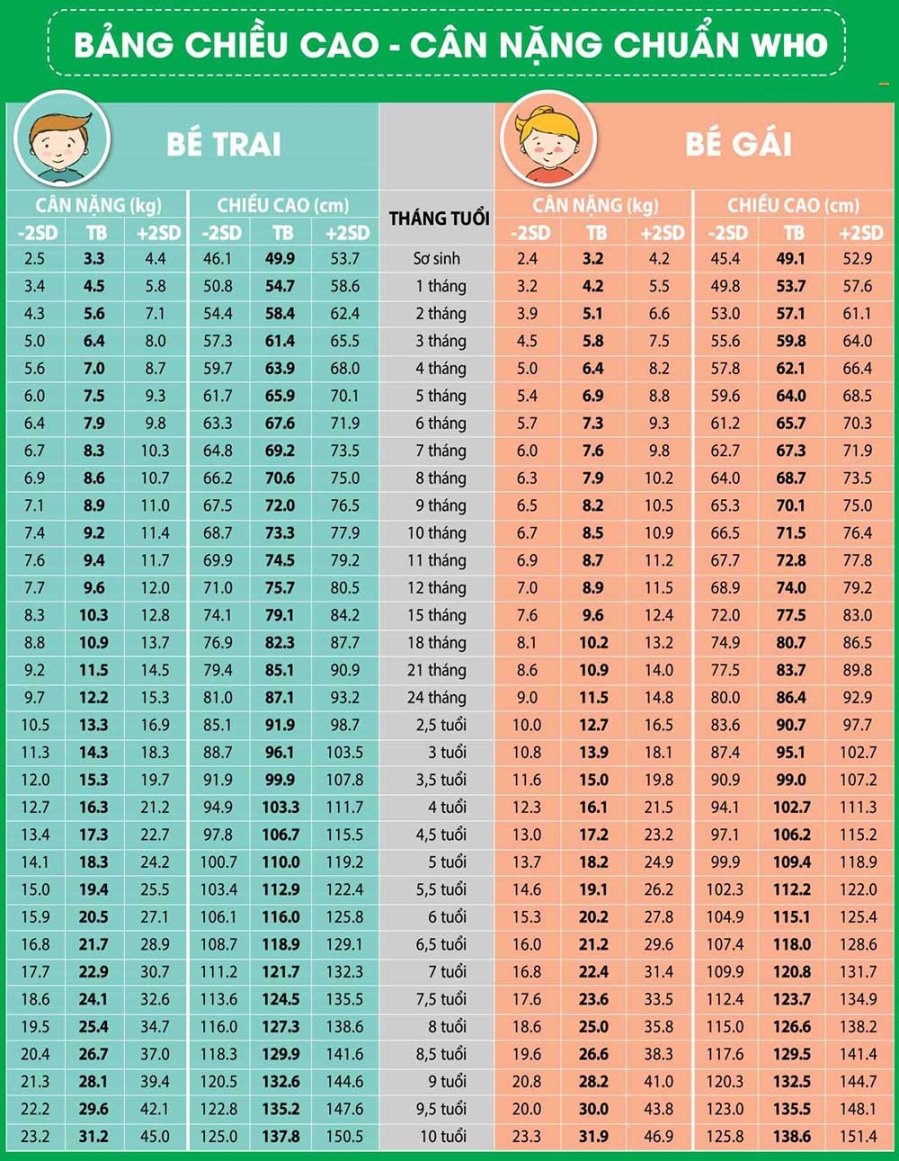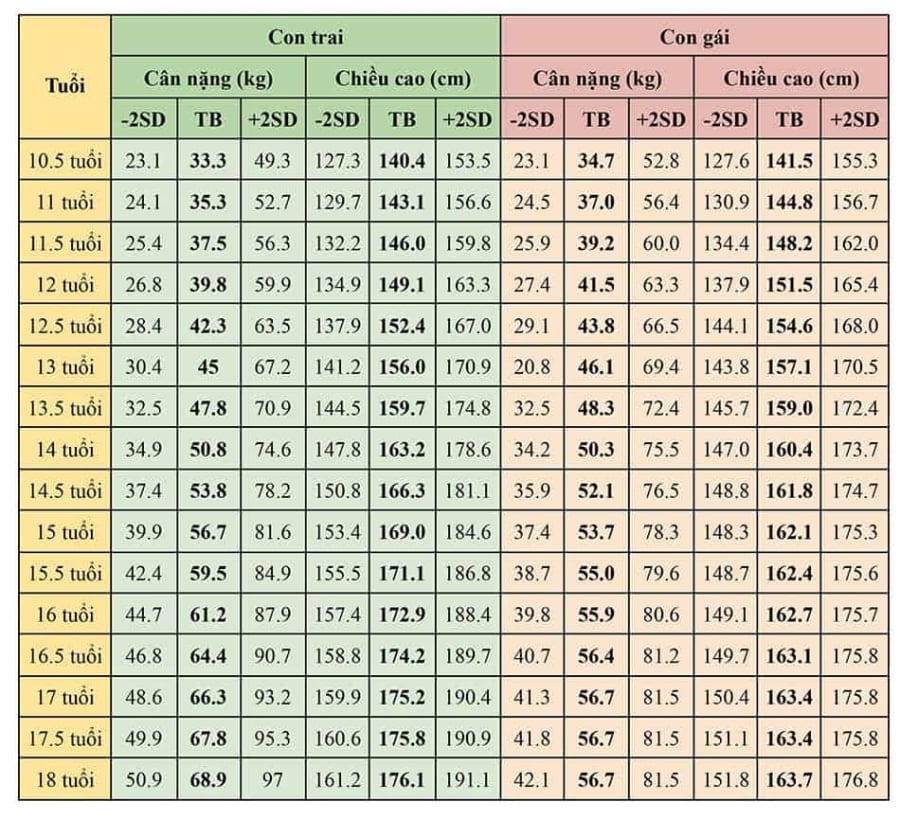Rules to know before looking up a child’s height and weight chart

From the moment of conception, a child’s body will continuously develop until puberty. Therefore, during the ages of 0-18, parents can monitor their child’s development through the standard height and weight chart for children published by the WHO. One thing to note is that there will be certain differences between the standard height and weight for boys and girls.
In which:
-
Mean (Average): A child achieves normal development according to WHO standards.
-
Results below -2SD: The child is underweight and malnourished.
-
Results above +2SD: The child is overweight or obese (based on weight) or too tall (based on height).
In addition to comparing with the standard height and weight chart for children, parents can also evaluate based on various other criteria. However, at each specific age, parents should have their own considerations when monitoring their child’s weight.
Height and weight chart for children aged 0-19 according to WHO
Standard height and weight for children aged 0-5
This is a very important stage as it is when the child starts to explore the world and experience the most rapid development. Therefore, there are 3 indicators of a child’s height and weight that parents should pay attention to:
-
Weight-for-age: If a child’s weight result is < -2SD, it means the child only reaches about 80% of the normal weight standard. This means your child may be mildly malnourished.
-
Height-for-age: If a child’s measured height is < -2SD compared to the average, it means your child may be stunted due to malnutrition.
-
Weight-for-height: If a child’s weight result is < -2SD compared to the average (normal development), it is highly likely that the child is suffering from malnutrition. To improve this, parents need to adjust the child's nutrition and daily activities.
-

Standard height and weight for children aged 5-15
From the ages of 5-15 (puberty), it is considered the golden period for a child’s development, especially in terms of height. At this time, in addition to the standard weight chart for children, parents should learn more about the Body Mass Index (BMI). To calculate this index, you simply divide the child’s weight by the square of their height.
Based on the BMI index, parents can determine whether their child is malnourished or overweight, obese and whether they need to lose weight or not. From there, they can determine the optimal method to support their child’s height development during this “golden” period.
Standard height and weight for children aged 15-19
When children enter puberty and their bodies gradually mature into adulthood. For most adults, the ideal BMI will range from 18.5 to 24.9. In addition to height, a child’s weight is also used in the BMI index to determine their physique based on the formula:

Weight (kg) BMI = Height (m) x Height (m)
-
If a child’s BMI value is calculated as < -2SD, it means the child is at risk of malnutrition and needs additional care and supplementation.
-
If a child’s height value is calculated as < -2SD, it means the child only reaches about 90% of the normal developmental standard and is at risk of malnutrition.
We hope the information above helps parents understand the height and weight chart for children aged 0-18. For underweight and malnourished children, parents should pay attention to supplementation, provide additional nutrients in their diet. In addition, there are many ways to support a child’s height development, such as supplementing vitamins and minerals, encouraging a healthy and active lifestyle, ensuring sufficient sleep, etc. During the early years and adolescence, children need the careful attention of their parents.































